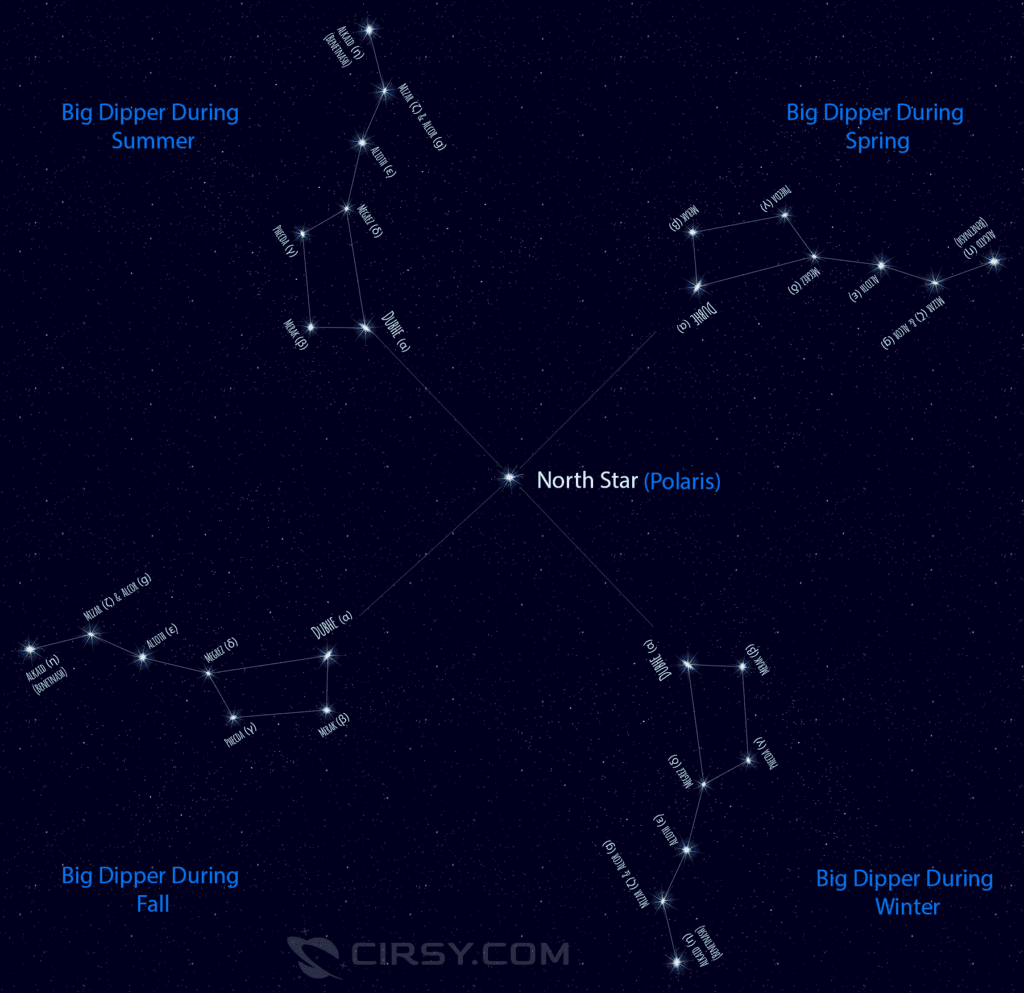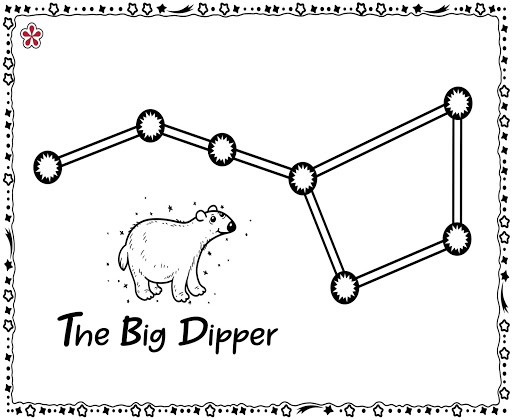
Big dipper by seasons
The Big Dipper is one of the most easily recognized star formations. It’s visible in nearly every location around the world, but why? What makes it so special? The answer can be found by looking closer at the formation itself. The Big Dipper is part of a larger constellation known as the Great Bear, or also commonly referred to as Ursa Major, which means “Major Bear” in Latin. We see a lot of smaller versions of animals in our day-to-day lives: pandas, koalas, raccoons… the list goes on. But seeing an entire constellation that primarily consists of non-human animals is much less common. So why does this bear get top billing in the sky? Let’s take a look!
What is the Big Dipper?
The Big Dipper is a constellation made up of seven stars that form the shape of a spoon. It is one of the most well-known constellations due to its simplicity and apparent location in the night sky. The Big Dipper is located in the northern hemisphere and can be seen at any time of year, but appears more prominently in winter.If you want to find it, look for the “W” shape of stars forming the constellation of Cassiopeia, then draw an imaginary line through those stars to complete the “bowl” of the Big Dipper. The North Star is often found by drawing an imaginary line through the middle of the Big Dipper’s handle.
How to Find the Big Dipper
Finding the Big Dipper isn’t as easy as you might think! Finding this famous group of stars can be a challenge even for experienced stargazers. Here are some tips to help:-Find the “W” of Cassiopeia. This is the first step to finding the Big Dipper.-If you’re using a star wheel, line up Cassiopeia’s “W” at the top of the wheel with the two brightest stars forming the “handle” of the Big Dipper’s “bowl” along the bottom.-If you’re using a smartphone app, use the compass function to find the “W” of Cassiopeia and then use the app to find the Big Dipper’s “bowl.”-Once you’ve found the “bowl,” look for the three medium-bright stars in a row forming the “handle” of the Big Dipper’s “bowl.”
Read this article for locating Big dipper
Why is it called the ‘Big’ Dipper?
The Big Dipper is actually part of a larger constellation, but it is by far the most recognizable and famous part of the Great Bear. The name “Big Dipper” is a shortened version of “Great Bear” – just like how the little panda is a shortened version of “giant panda.” So why is the constellation called the Great Bear? The answer to that lies in the origin of the Big Dipper itself. The Big Dipper is made up of seven stars that look like they form the shape of a spoon, hence the name. In Latin, a “dipper” is known as a “scalpel,” but these stars are actually part of the larger Great Bear constellation. Why? Well, the Big Dipper is actually a bear cub! The Big Dipper is the offspring of the Great Bear constellation, which is known as Ursa Major, which means “Major Bear” in Latin.
The Function of the Bear Constellation
Like many of the constellations we see today, the Great Bear was created by ancient civilizations as a way of understanding their place in the universe. They imagined that the stars above were a reflection of the animals below, with the Great Bear representing a mother bear and her cubs. The Great Bear constellation was most likely created by the ancient Babylonians as early as 3000 BCE. It first appeared in cuneiform texts, where it was referred to as “Ursa” – the Latin word for “bear.”The Great Bear constellation is significant not only because it is the mother bear and her cubs, but also because the group of stars known as the Big Dipper actually rotates around the North Star. This means that the Big Dipper appears to move around the North Star throughout the year.
Finding direction using Ursa Major
It’s easy to get lost when you’re out in the wilderness, but luckily there’s the way you can use the Big Dipper to find your way. If you’re lost and trying to find your way, find a clear night sky and look for the Big Dipper.-If you’re facing north, the two stars on the outside of the bowl of the Big Dipper should be pointing toward you. If you’re facing south, the two stars in the middle of the bowl should be pointing toward you. If you’re facing east, the shiny star in the front of the bowl should be pointing toward you, and if you’re facing west, the two stars in the back of the bowl should be pointing toward you.
Wrapping up
The Big Dipper is an important constellation for many reasons. It is one of the easiest constellations to find in the night sky, which makes it a great tool for beginning stargazers. It is also significant because it is the mother bear and her cubs and also because the group of stars known as the Big Dipper actually rotates around the North Star. Being able to navigate by the Big Dipper is important for any aspiring outdoorsman. Whether you’re trekking through the woods, canoeing on a lake, or hiking through a mountainous region, knowing how to use the Big Dipper can help you find your way and make sure you don’t get lost.
Recommended Read
First Night Out Series: Measuring Distances In The Sky

Get exclusive info about Cirsy.com Updates
Subscribe to our newsletter and don’t miss anything.
We promise we will not spam you!
Follow CIRSY
#spacescience

